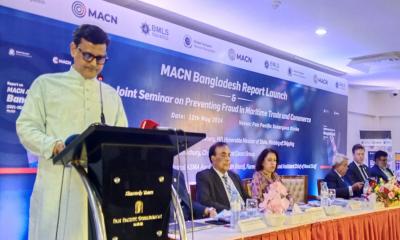Tea gardens of Bangladesh, renowned for its exquisite flavors and lush landscapes, are currently facing a severe crisis due to a combination of insufficient rainfall and soaring temperatures.It is difficult to maintain the quality of their harvests due to rising temperatures, longer dry spells and erratic rainfall. Many tea estates are in increasing tea plants to plants canopy cover to minimise the impact of climate change.
The adverse climatic conditions have disrupted the tea plants' photosynthesis process, leading to a phenomenon known as the Banji period. This has resulted in stunted growth and a significant decline in tea production, affecting the livelihoods of tea pluckers and other workers. Moreover, the dwindling water levels and dry natural reserves have exacerbated the challenges faced by garden management in their efforts to irrigate the tea plants.
The tea gardens heavily rely on a balanced amount of rainfall throughout the year. However, in recent times, the region has been experiencing inadequate precipitation. As a consequence, the tea plants have been unable to engage in the crucial process of photosynthesis effectively.
Photosynthesis is vital for the plants to produce energy and vital nutrients necessary for growth. The lack of rainfall has led to a prolonged Banji period, during which the tea plants are unable to produce new shoots. This has resulted in stunted growth and reduced overall tea production.
The repercussions of the Banji period and the high temperatures are felt by the tea pluckers who depend on the availability of green leaves. Typically, during this time of the year, tea pluckers would gather an average of 50 to 80 kilograms of tea leaves per day.
However, this year, due to the adverse climate conditions, their yield has dropped significantly, with tea pluckers only able to collect 20 to 30 kilograms per day. This decline in productivity has had a direct impact on the income of these workers, many of whom depend on the tea gardens for their livelihoods.
Aside from tea pluckers, other workers within the tea gardens are also struggling due to the extreme temperatures. The high heat makes it difficult for them to work for extended periods, posing health risks and reducing overall productivity. The scorching weather adds to their already challenging work conditions, making it harder to maintain regular operations and meet production targets.
The garden management faces a daunting task in mitigating the effects of the inadequate rainfall and rising temperatures. Tea gardens equipped with irrigation systems are attempting to irrigate the tea plants to compensate for the lack of rain.
However, even these gardens are facing challenges as the water levels are rapidly depleting. Natural reserves like canals, which are essential water sources, have dried up, further exacerbating the water scarcity issue. The diminishing water levels put the survival of tea plants at risk and pose a significant challenge for garden management in ensuring the health and growth of the tea gardens.
The tea gardens of Bangladesh,specially the city of Tea, Srimongol is currently facing a crisis due to insufficient rainfall and scorching temperatures. The Banji period caused by the lack of rain has resulted in stunted growth and a significant decline in tea production. Tea pluckers, who rely on the availability of green leaves, are experiencing reduced yields, affecting their livelihoods.
Other workers also face challenges working in the high temperatures. Moreover, the dwindling water levels and dry natural reserves pose additional hurdles for garden management in their efforts to irrigate the tea plants. Immediate measures, such as water conservation strategies and sustainable irrigation systems, are crucial to safeguarding the tea gardens and the livelihoods of those dependent on them.
The views expressed in this article are the author’s own and do not necessarily reflect The Report’s editorial stance.







-20240517110053.jpg)



























